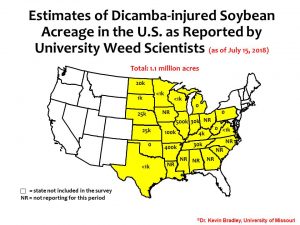Helen H. McDuffie, Punam Pahwa, John R. McLaughlin, John J. Spinelli, Shirley Fincham, James A. Dosman, Diane Robson, Leo F. Skinnider and Norman W. Choi, “Non-Hodgkin’s Lymphoma and Specific Pesticide Exposures in Men: Cross-Canada Study of Pesticides and Health,” Cancer Epidemiology, Biomarkers, & Prevention, 2001, 10.
ABSTRACT:
Our objective in the study was to investigate the putative associations of specific pesticides with non-Hodgkin’s Lymphoma [NHL; International Classification of Diseases, version 9 (ICD-9) 200, 202]. We conducted a Canadian multicenter population-based incident, case (n = 517)-control (n = 1506) study among men in a diversity of occupations using an initial postal questionnaire followed by a telephone interview for those reporting pesticide exposure of 10 h/year or more, and a 15% random sample of the remainder. Adjusted odds ratios (ORs) were computed using conditional logistic regression stratified by the matching variables of age and province of residence, and subsequently adjusted for statistically significant medical variables (history of measles, mumps, cancer, allergy desensitization treatment, and a positive history of cancer in first-degree relatives). We found that among major chemical classes of herbicides, the risk of NHL was statistically significantly increased by exposure to phenoxyherbicides [OR, 1.38; 95% confidence interval (CI), 1.06–1.81] and to dicamba (OR, 1.88; 95% CI, 1.32–2.68). Exposure to carbamate (OR, 1.92; 95% CI, 1.22–3.04) and to organophosphorus insecticides (OR, 1.73; 95% CI, 1.27–2.36), amide fungicides, and the fumigant carbon tetrachloride (OR, 2.42; 95% CI, 1.19–5.14) statistically significantly increased risk. Among individual compounds, in multivariate analyses, the risk of NHL was statistically significantly increased by exposure to the herbicides 2,4-dichlorophenoxyacetic acid (2,4-D; OR, 1.32; 95% CI, 1.01–1.73), mecoprop (OR, 2.33; 95% CI, 1.58–3.44), and dicamba (OR, 1.68; 95% CI, 1.00–2.81); to the insecticides malathion (OR, 1.83; 95% CI, 1.31–2.55), 1,1,1-trichloro-2,2-bis (4-chlorophenyl) ethane (DDT), carbaryl (OR, 2.11; 95% CI, 1.21–3.69), aldrin, and lindane; and to the fungicides captan and sulfur compounds. In additional multivariate models, which included exposure to other major chemical classes or individual pesticides, personal antecedent cancer, a history of cancer among first-degree relatives, and exposure to mixtures containing dicamba (OR, 1.96; 95% CI, 1.40–2.75) or to mecoprop (OR, 2.22; 95% CI, 1.49–3.29) and to aldrin (OR, 3.42; 95% CI, 1.18–9.95) were significant independent predictors of an increased risk for NHL, whereas a personal history of measles and of allergy desensitization treatments lowered the risk. We concluded that NHL was associated with specific pesticides after adjustment for other independent predictors. FULL TEXT

